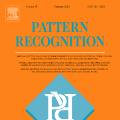The rapid emergence of airborne platforms and imaging sensors are enabling new forms of aerial surveillance due to their unprecedented advantages in scale, mobility, deployment and covert observation capabilities. This paper provides a comprehensive overview of human-centric aerial surveillance tasks from a computer vision and pattern recognition perspective. It aims to provide readers with an in-depth systematic review and technical analysis of the current state of aerial surveillance tasks using drones, UAVs and other airborne platforms. The main object of interest is humans, where single or multiple subjects are to be detected, identified, tracked, re-identified and have their behavior analyzed. More specifically, for each of these four tasks, we first discuss unique challenges in performing these tasks in an aerial setting compared to a ground-based setting. We then review and analyze the aerial datasets publicly available for each task, and delve deep into the approaches in the aerial literature and investigate how they presently address the aerial challenges. We conclude the paper with discussion on the missing gaps and open research questions to inform future research avenues.
翻译:由于空中平台和成像传感器在规模、机动性、部署和隐蔽观测能力方面具有前所未有的优势,其迅速出现使新的空中监视形式成为可能。本文件从计算机视野和模式识别角度全面概述了以人为中心的空中监视任务,目的是向读者提供对使用无人驾驶飞机、无人驾驶飞行器和其他空中平台进行的空中监视任务现状的深入系统审查和技术分析。主要关心的对象是人类,在人类中,发现、识别、跟踪、重新确定一个或多个主题并分析它们的行为。更具体地说,我们首先讨论在空中环境中执行这些任务与地面环境相比的独特挑战。然后我们审查和分析为每项任务公开提供的空中数据集,深入了解航空文献中的做法,并调查它们目前如何应对空中挑战。我们结束这份文件时讨论了缺失的差距和公开研究问题,以通报未来的研究途径。



